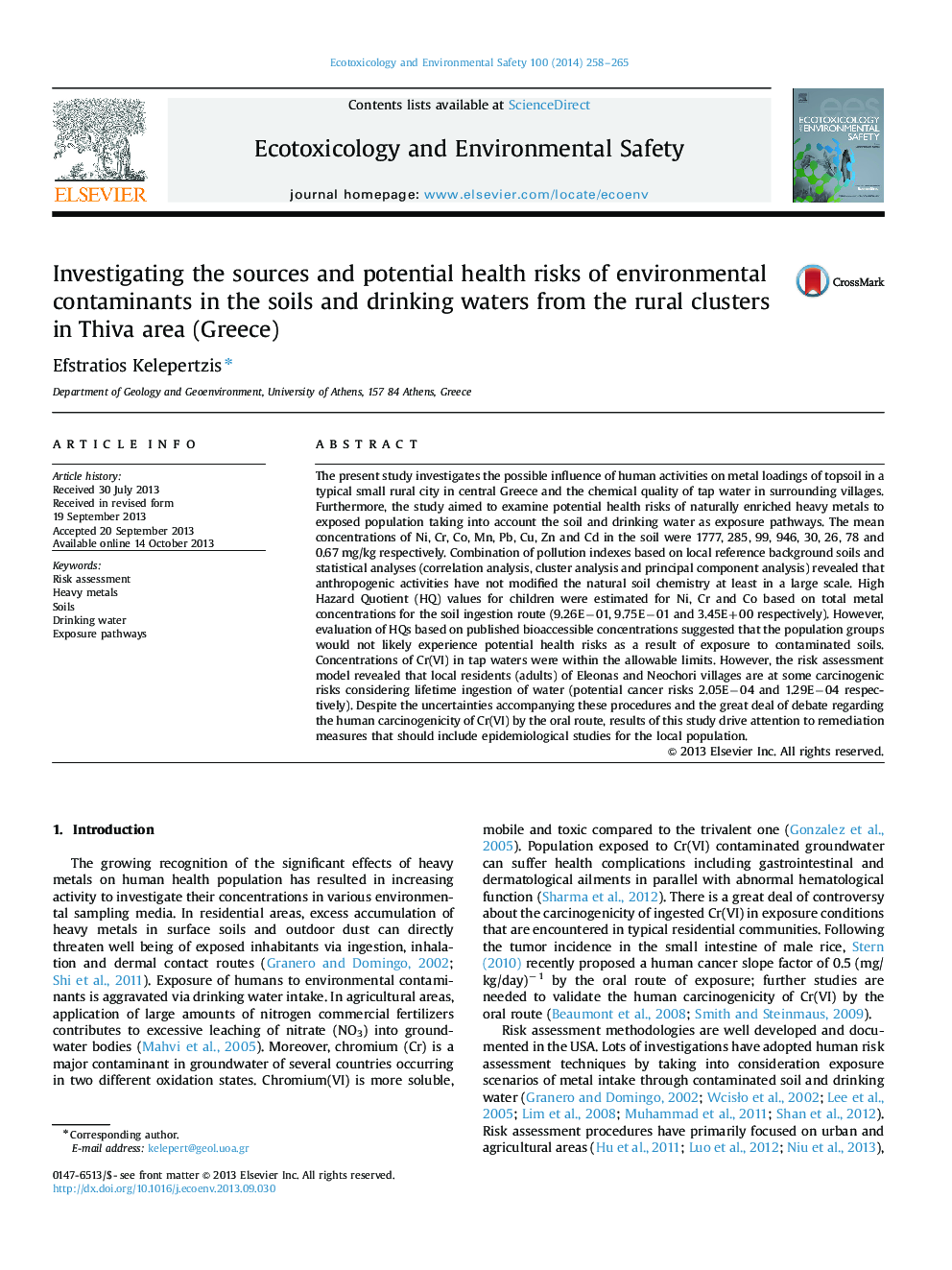| Article ID | Journal | Published Year | Pages | File Type |
|---|---|---|---|---|
| 6312291 | Ecotoxicology and Environmental Safety | 2014 | 8 Pages |
Abstract
The present study investigates the possible influence of human activities on metal loadings of topsoil in a typical small rural city in central Greece and the chemical quality of tap water in surrounding villages. Furthermore, the study aimed to examine potential health risks of naturally enriched heavy metals to exposed population taking into account the soil and drinking water as exposure pathways. The mean concentrations of Ni, Cr, Co, Mn, Pb, Cu, Zn and Cd in the soil were 1777, 285, 99, 946, 30, 26, 78 and 0.67Â mg/kg respectively. Combination of pollution indexes based on local reference background soils and statistical analyses (correlation analysis, cluster analysis and principal component analysis) revealed that anthropogenic activities have not modified the natural soil chemistry at least in a large scale. High Hazard Quotient (HQ) values for children were estimated for Ni, Cr and Co based on total metal concentrations for the soil ingestion route (9.26Eâ01, 9.75Eâ01 and 3.45E+00 respectively). However, evaluation of HQs based on published bioaccessible concentrations suggested that the population groups would not likely experience potential health risks as a result of exposure to contaminated soils. Concentrations of Cr(VI) in tap waters were within the allowable limits. However, the risk assessment model revealed that local residents (adults) of Eleonas and Neochori villages are at some carcinogenic risks considering lifetime ingestion of water (potential cancer risks 2.05Eâ04 and 1.29Eâ04 respectively). Despite the uncertainties accompanying these procedures and the great deal of debate regarding the human carcinogenicity of Cr(VI) by the oral route, results of this study drive attention to remediation measures that should include epidemiological studies for the local population.
Related Topics
Life Sciences
Environmental Science
Environmental Chemistry
Authors
Efstratios Kelepertzis,
